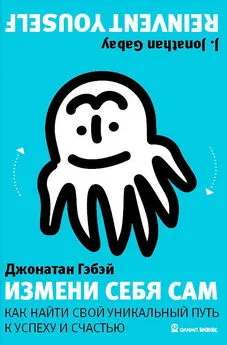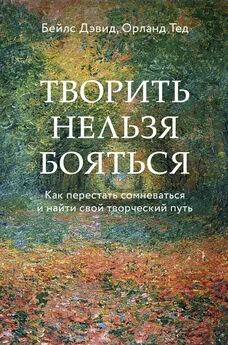Исайя Хенкель - Наука успеха [Как фокусироваться на важном и найти свой уникальный путь] [litres]
- Название:Наука успеха [Как фокусироваться на важном и найти свой уникальный путь] [litres]
- Автор:
- Жанр:
- Издательство:Литагент Альпина
- Год:2019
- Город:Москва
- ISBN:978-5-9614-2648-9
- Рейтинг:
- Избранное:Добавить в избранное
-
Отзывы:
-
Ваша оценка:
Исайя Хенкель - Наука успеха [Как фокусироваться на важном и найти свой уникальный путь] [litres] краткое содержание
Исайя Хенкель считает, что вы будете расти, только если возьмете ответственность на себя и перестанете ставить свою жизнь в зависимость от других. Он рассказывает, как жить жизнью своей мечты. Вы узнаете, как избавиться от токсичных людей, негативных мыслей и всего, что зря истощает вашу энергию. Книга дает простые инструменты, чтобы отличать нужное от ненужного, не брать на себя лишние обязательства и стать избирательным на пути к своим целям. Вы научитесь концентрироваться на важном и в итоге сможете прийти к настоящему успеху!
Наука успеха [Как фокусироваться на важном и найти свой уникальный путь] [litres] - читать онлайн бесплатно ознакомительный отрывок
Интервал:
Закладка:
80
Tsai, S. et al. (2005). ‘Age at retirement and long term survival of an industrial population: prospective cohort study’. BMJ . 331:995. http://www.bmj.com/content/331/7523/995.
81
Tausch, S. (2015). ‘Thinking like Disney: Supporting the Disney method using ambient feedback based on group performance’. https://www.medien.ifi.lmu.de/pubdb/publications/pub/tausch2015interact/tausch2015interact.pdf.
82
. ‘Just the stats: he science of video engagement’. SingleGrain . https://www.singlegrain.com/video-marketing/just-stats-science-video-engagement.
83
Там же.
84
HubSpot. ‘Search engine optimization statistics’. https://www.hubspot.com/marketing-statistics.
85
Saleh, K. ‘How effective is inbound marketing – statistics and trends’ [infographic]. Invesp . https://www.invespcro.com/blog/how-effective-is-inbound-marketing.
86
Haven, K. (2007). ‘Story proof: The science behind the startling power of story’. https://www.amazon.com/Story-Proof-Science-Behind-Startling/dp/1591585465.
87
Fields, D. (2010). ‘Of two minds: Listener brain patterns mirror those of the speaker’. Scientific American . https://blogs.scientificamerican.com/guest-blog/of-two-minds-listener-brain-patterns-mirror-those-of-the-speaker.
88
LeadPages. ‘Start with high-performing templates, then make them yours’. https://www.leadpages.net.
89
ClickFunnels. https://www.clickfunnels.com.
90
Gateway Commercial Finance. ‘5 Reasons why you can’t ignore email marketing’. https://gatewaycfs.com/bff/ob/5-reasons-why-you-can’t-ignore-email-marketing.
91
Kissmetrics. ‘Email crushes social media’. Kissmetrics Blog. https://blog.kissmetrics.com/email-crushes-social-media.
92
Survey Monkey: Make better decisions with the world’s number one survey platform. https://www.surveymonkey.com.
93
Kissmetrics. ‘5 reasons email marketing crushes social media marketing for B2B’. Kissmetrics Blog. https://blog.kissmetrics.com/email-crushes-social-media.
94
SSL-сертификат дает возможность использовать https-протокол (защищенное соединение).
95
Flynn, F. ‘If you need help, just ask: Underestimating compliance with direct requests for help’. Journal of Personality and Social Psychology , 95 (1): 128–143. http://psycnet.apa.org/journals/emo/9/3/361.
96
Achtziger, A. et al. (2008). ‘Implementation intentions and shielding goal striving from unwanted thoughts and feelings’. Personality and Psychology Bulletin , 34 (3). http://journals.sagepub.com/doi/abs/10.1177/0146167207311201.
97
Lee, F. K. (2003). ‘Personality and the goal-striving process: the influence of achievement goal patterns, goal level, and mental focus on performance and enjoyment’. Journal of Applied Psychology . 88 (2): 256–65. https://www.ncbi.nlm.nih.gov/pubmed/12731709.
98
Hanson, R. ‘How your brain makes you feel intimidated’. Confronting the Negativity Bias . http://www.rickhanson.net/how-your-brain-makes-you-easily-intimidated.
99
APA (2007) ‘Someone to complain with isn’t necessarily a good thing, especially for teenage girls’. http://www.apa.org/news/press/releases/2007/07/co-rumination.aspx.
100
Abu-Asab, M., et al. (2012). ‘Analyzing heterogeneous complexity in complementary and alternative medicine research: a systems biology solution via parsimony phylogenetics’. Forsch Komplementmed . 1: 42–8. doi: 10.1159/000335190. https://www.ncbi.nlm.nih.gov/pubmed/22327551.
101
Viswanathan, A. and Rama Murthy, G. ‘Heterogeneous dynamic priority scheduling in time critical applications: Mobile Wireless Sensor Networks’. Thesis. https://arxiv.org/abs/1302.5903.
102
Iyengar, S. (2011). The art of choosing . New York: Twelve. https://www.amazon.com/The-Art-Choosing-Sheena-Iyengar/dp/0446504114.
103
Wilkin & Sons. ‘Tiptree jams and preserves’. https://www.tiptree.com.
104
Hagger, M. S., et al. (2010). ‘Ego depletion and the strength model of self-control: a meta-analysis’. Psychology Bulletin . 136 (4): 495–525. https://www.ncbi.nlm.nih.gov/pubmed/20565167.
105
Patrick, V. and Hagtvedt, H. (2012). ‘“I don’t” versus “I can’t”: When empowered refusal motivates goal-directed behavior’. Journal of Consumer Research , 39 (2): 371–381. http://www.jstor.org/stable/10.1086/663212?seq=1#page_scan_tab_contents.
106
Flynn, F. et al. (2008) ‘If you need help, just ask: Underestimating compliance with direct requests for help’. Journal of Personality and Social Psychology , 95 (1): 128–143. http://dx.doi.org/10.1037/0022-3514.95.1.128.
107
Carrier, J. and Monk, T. H. (2000). ‘Circadian rhythms of performance: new trends’. Chronobiology International . 17 (6): 719–32. https://www.ncbi.nlm.nih.gov/pubmed/11128289.
108
Hull, J. T., Wright, K.P. and Czeisler, C. A. (2003). ‘The influence of subjective alertness and motivation on human performance independent of circadian and homeostatic regulation’. Journal of Biological Rhythms , 18 (4): 329–38. https://www.ncbi.nlm.nih.gov/pubmed/12932085.
109
Pronin, E., Lin, D. and Lin, L. R. (2002). ‘The bias blind spot: Perceptions of bias in self versus others’. Personality and Social Psychology Bulletin , 28 (3). http://journals.sagepub.com/doi/abs/10.1177/0146167202286008.
110
Pronin, E., Gilovich, T. and Ross L. (2004). ‘Objectivity in the eye of the beholder: divergent perceptions of bias in self versus others’. Psychological Review . 111 (3): 781–99. https://www.ncbi.nlm.nih.gov/pubmed/15250784.
111
Leitner, J. B., Hehman, E. and Deegan M. (2014). ‘Adaptive disengagement buffers self-esteem from negative social feedback’. http://journals.sagepub.com/doi/abs/10.1177/0146167214549319.
112
. ‘Reciprocity’. Wikipedia: https://en.wikipedia.org/wiki/Reciprocity_(social_psychology).
113
Stinson, F.S., et al. (2008). ‘Prevalence, correlates, disability, and comorbidity of DSM-IV narcissistic personality disorder: results from the wave 2 national epidemiologic survey on alcohol and related conditions’. Journal of Clinical Psychiatry . 69 (7):1033–45. https://www.ncbi.nlm.nih.gov/pubmed/18557663.
114
Zitek, E., et al. (2010). ‘Victim entitlement to behave selfishly’. Journal of Personality and Social Psychology , 98 (2): 245–255. https://www.ncbi.nlm.nih.gov/pubmed/20085398.
115
Allen, J. (2012). ‘Decisions, decisions…dopamine?’ http://www.capitalcityweekly.com/stories/021512/new_955739899.shtml.
116
Baumeister, R. (2006). ‘Self-regulation and personality: How interventions increase regulatory success, and how depletion moderates the effects of traits on behavior’. Journal of Personality . 74 (6): 1773–1802. http://onlinelibrary.wiley.com/doi/10.1111/j.1467–6494.2006.00428.x/abstract.
117
Lehrer, J. (2009). ‘Blame it on the brain: The latest neuroscience research suggests spreading resolutions out over time is the best approach’. The Wall Street Journal . https://www.wsj.com/articles/SB10001424052748703478704574612052322122442.
118
Duhigg, C. (2012). The Power of Habit: Why we do what we do, and how to change . London: William Heinemann.
119
Mann, S. and R. Cadman (2014). ‘Does being bored make us more creative?’ Creativity Research Journal 26 (2): 165–173. http://www.tandfonline.com/doi/abs/10.1080/10400419.2014.901073#.VcUdexNVikp.
120
Gasper, K. and B. Middlewood. (2014). ‘Approaching novel thoughts: Understanding why elation and boredom promote associative thought more than distress and relaxation’. Journal of Experimental Social Psychology 52: 50–57. http://www.sciencedirect.com/science/article/pii/S0022103113002205.
121
Richtel, M. (2012). ‘And the walls came tumbling down, again: Lessons in the art of pillow fort construction’. The Wall Street Journal . http://www.nytimes.com/2012/04/19/garden/lessons-in-the-art-of-pillow-fort-construction.html?pagewanted=all&_r=0.
122
. ‘Feasting: The archaeology and history of celebrating food’. https://www.thoughtco.com/feasting-archaeology-and-history-170940.
123
Stromberg, P. G. (2009). ‘The great feast: he mystery lurking behind our national feast’. Psychology Today . https://www.psychologytoday.com/blog/sex-drugs-and-boredom/200911/the-great-feast.
124
Telos consulting. ‘Want to be less stressed and live longer? Think like a leader’. http://www.teleosconsulting.com/2012/11/want-to-be-less-stressed-and-live-longer-think-like-a-leader.
125
Richtel, M. (2012). ‘The competing views on competition’. New York Times . http://www.nytimes.com/2012/10/11/garden/the-role-of-competitiveness-in-raising-healthy-children.html.
126
Seppälä, E. (2013). ‘How desire fools us: The benefits and dangers of the chase’. Psychology Today . https://www.psychologytoday.com/blog/feeling-it/201308/how-desire-fools-us-the-benefits-and-dangers-the-chase.
127
Knutson, B. ‘Visualizing desire’. Stanford University. https://www.youtube.com/watch?v=CUK8D-kX0fE.
128
Brooks, C. (2012). ‘Recognizing employees is crucial to retention’. Business News Daily . http://www.businessnewsdaily.com/2350-employee-recognition-happiness.html.
129
Gonathellis, O. ‘5 Ways to connect with your desire to create’. http://psychcentral.com/blog/archives/2013/02/28/5-ways-to-reconnect-with-your-desire-to-create.
130
Logan, D. (2011). ‘Leadership advice that can help you live longer’. CBS: Moneywatch . http://www.cbsnews.com/news/leadership-advice-that-can-help-you-live-longer.
131
Friedman, H. S. and L. R. Martin (2012). The Longevity Project: Surprising discoveries for health and long life from the landmark eight-decade study. New York: Plume (Русский перевод: Фридман Х., Мартин Л. Проект «Долголетие». Сенсационные открытия, сделанные на основе исследования, которое длилось почти 100 лет. – М.: София, 2011.)
Читать дальшеИнтервал:
Закладка:
![Обложка книги Исайя Хенкель - Наука успеха [Как фокусироваться на важном и найти свой уникальный путь] [litres]](/books/1075466/isajya-henkel-nauka-uspeha-kak-fokusirovatsya-na.webp)
![Грегори Робертс - Духовный путь [litres]](/books/1057092/gregori-roberts-duhovnyj-put-litres.webp)
![Фрэнк Мартела - Wonderful Life. Размышления о том, как найти смысл жизни [litres]](/books/1061494/frenk-martela-wonderful-life-razmyshleniya-o-tom-k.webp)
![Кэрри Лонсдейл - Новый путь [litres]](/books/1061814/kerri-lonsdejl-novyj-put-litres.webp)
![Анна Мохова - Ты не одна [Как забыть одиночество и найти счастье внутри себя] [litres]](/books/1065776/anna-mohova-ty-ne-odna-kak-zabyt-odinochestvo-i-n.webp)
![Татьяна Мужицкая - Мне все льзя [О том, как найти свое призвание] [litres]](/books/1073266/tatyana-muzhickaya-mne-vse-lzya-o-tom-kak-najti-sv.webp)
![Джошуа Кертисс - Не позволяйте тревоге рулить вашей жизнью [Наука управления эмоциями. Наука управления эмоциями и осознанность для преодоления страха и беспокойства] [litres]](/books/1080691/dzhoshua-kertiss-ne-pozvolyajte-trevoge-rulit-vashej.webp)
![Анна Одувалова - Как найти королеву Академии? [litres]](/books/1081817/anna-oduvalova-kak-najti-korolevu-akademii-litre.webp)


